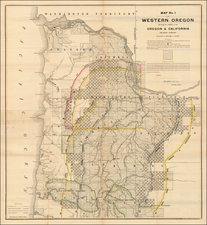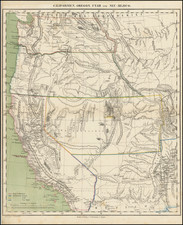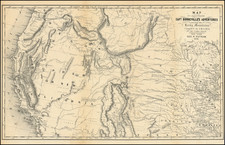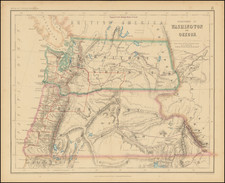Official Map of the City of Portland by George F. Cram offers a glimpse into the urban landscape of Portland at the close of the 19th century. A rapidly expanding city, the map showcases rail lines and newly constructed neighborhoods that would define the commercial aspect of the city. One can also see the increased city development in the form of the newly constructed Portland University (1891) and Mt. Calvary Catholic Cemetery (1888).
During the late 19th and early 20th century, Portland cultivated its identity as an economic hub within the Pacific Northwest. The city's strategic location, partly due to the convergence of Union Pacific, Southern Pacific, and Northern Pacific railroads, facilitated a burgeoning economy marked by trade, transport, and innovation. The clear delineation of these rail lines in the Official Map of the City of Portland reflects the economic and social development of the city, a consistent theme during America’s Gilded Age, a period marked by rapid industrialization and urban expansion.
The visual representation of the various neighborhoods and roads encapsulates the city’s demographic and spatial evolution. Each detail, from the inclusion of key businesses to the distinct neighborhood, is rendered with clarity, offering viewers an insight into the urban morphology of 1891 Portland. The map, printed in black with water bodies highlighted in blue, balances aesthetic appeal with informational precision, embodying a convergence of art and science characteristic of cartographic practices of the era.
The cartographers’ commitment to capturing the dynamic interplay between natural and built environments epitomizes the map’s enduring value. It stands as a testament to Portland’s historical trajectory, providing not only a visual account of its geographical layout but also offering nuanced insights into the socio-economic and cultural contours of the city in the late 19th century. Each element, meticulously archived, contributes to the rich tapestry of Portland’s urban history, rendering the Official Map of the City of Portland an indispensable asset for those seeking to explore and understand the city’s historical and cultural landscape.
Overall, this map of Portland highlights the urban development of the West during the late 19th century. Portland was no longer a sleepy village in the remote West, rather it was a burgeoning metropolis ready to develop industry and opportunity.
George F. Cram (1842-1928), or George Franklin Cram, was an American mapmaker and businessman. During the Civil War, Cram served under General William Tecumseh Sherman and participated in his March to the Sea. His letters of that time are now important sources for historians of the Civil War. In 1867, Cram and his uncle, Rufus Blanchard, began the company known by their names in Evanston, Illinois.
Two years later, Cram became sole proprietor and the company was henceforth known as George F. Cram Co. Specializing in atlases, Cram was one of the first American companies to publish a world atlas. One of their most famous products was the Unrivaled Atlas of the World, in print from the 1880s to the 1950s.
Cram died in 1928, seven years after he had merged the business with that of a customer, E.A. Peterson. The new company still bore Cram’s name. Four years later, the Cram Company began to make globes, a branch of the business that would continue until 2012, when the company ceased to operate. For the final several decades of the company’s existence it was controlled by the Douthit family, who sold it just before the company was shuttered.









![[Oregon Territory] Carte de l'Oregon (and) [Astoria Factory]](https://storage.googleapis.com/raremaps/img/small/77722.jpg)




